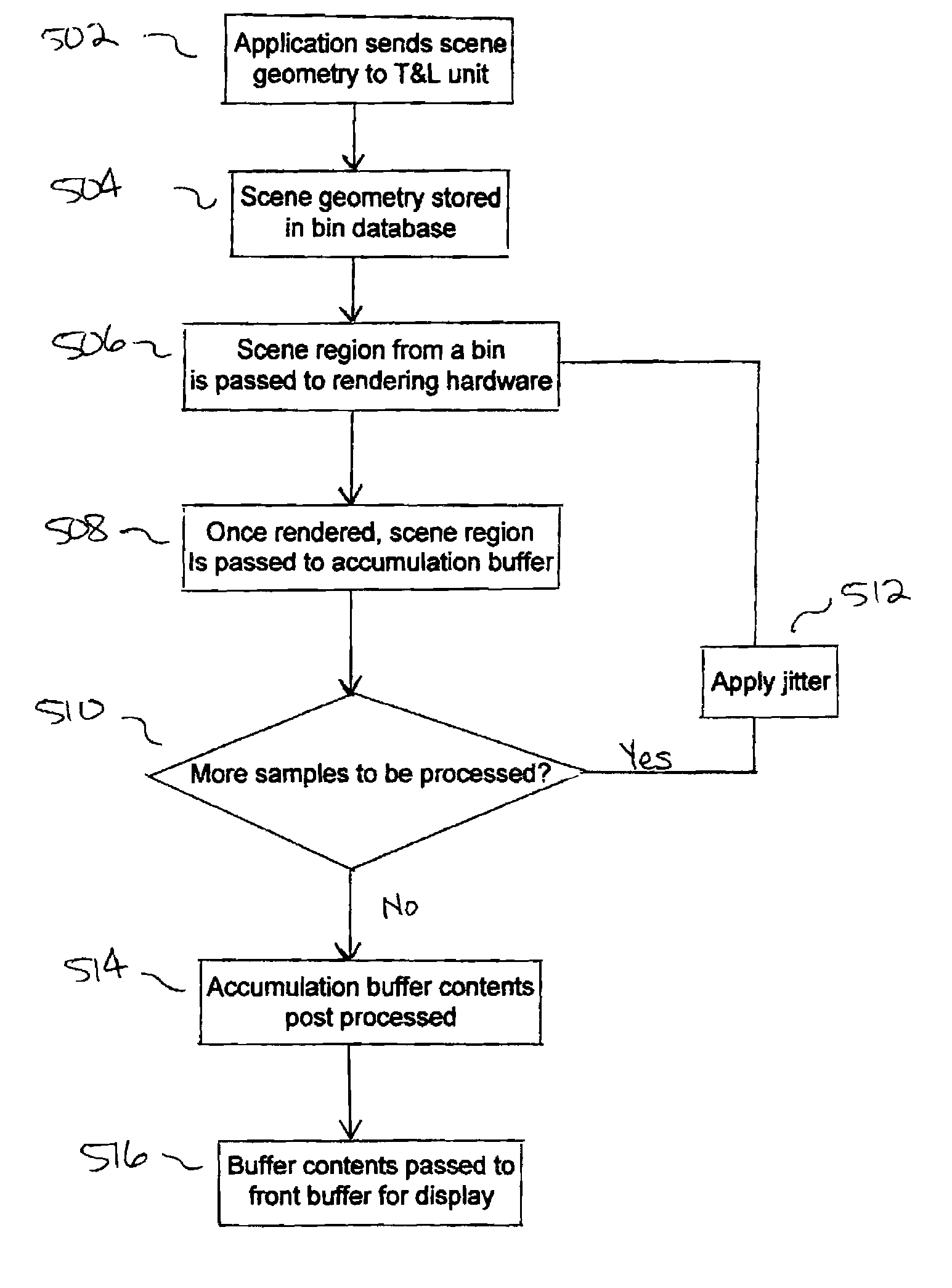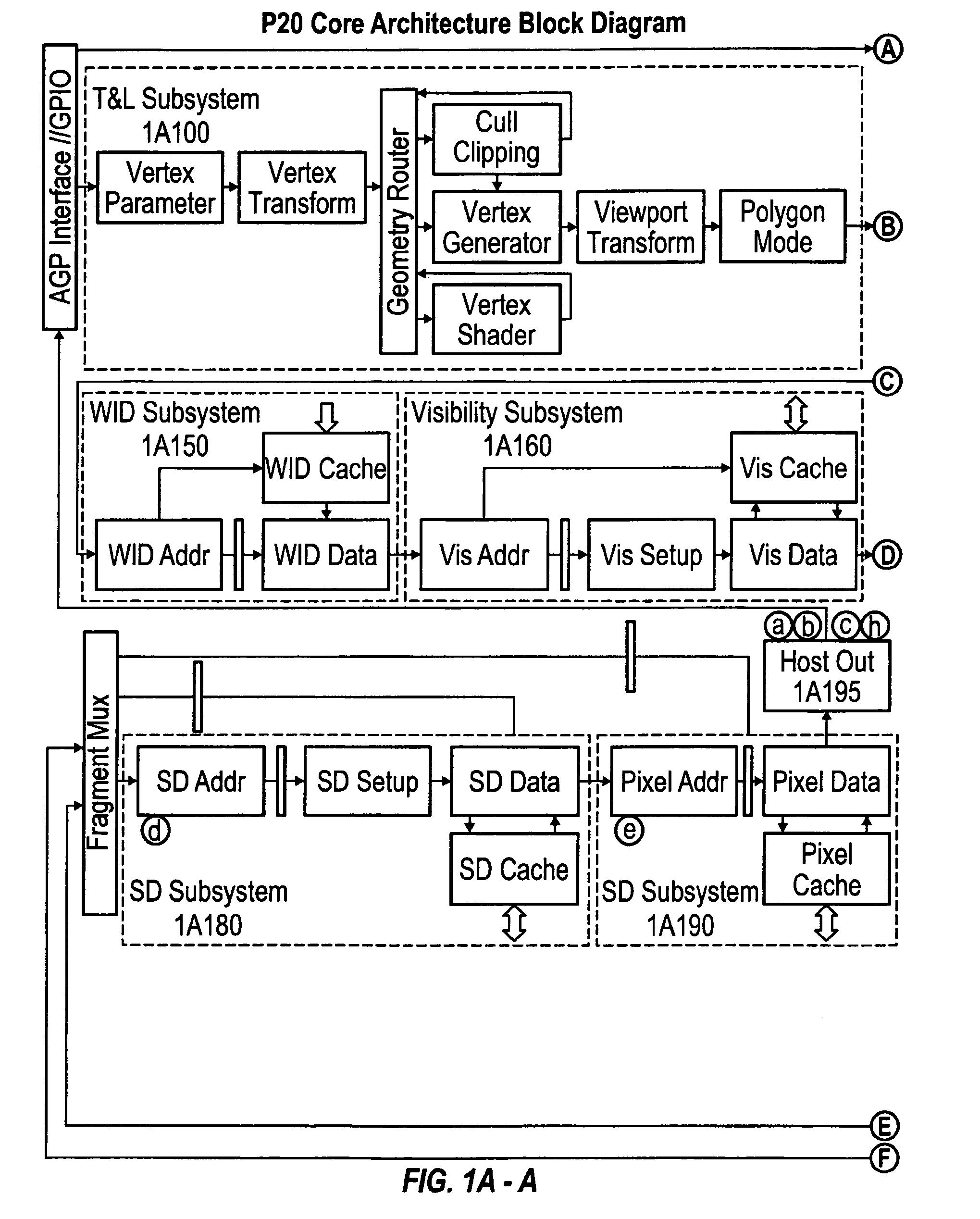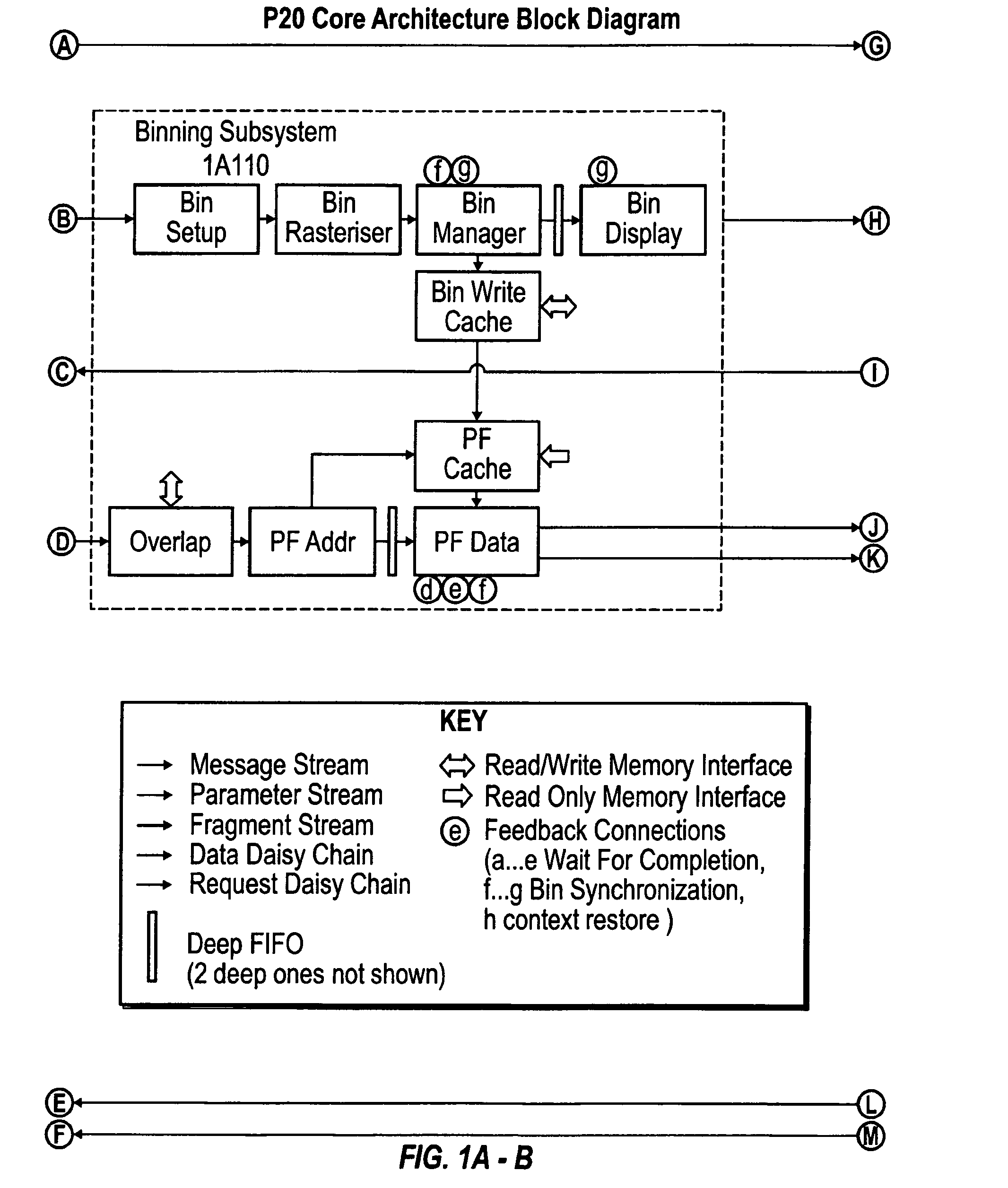Stochastic super sampling or automatic accumulation buffering
a buffering and stochastic technology, applied in the field of antialiasing, can solve the problems of large data manipulation to be done, large memory bandwidth, and large geometry to be added, and achieve the effect of reducing the number of polygons and requiring a large memory bandwidth
- Summary
- Abstract
- Description
- Claims
- Application Information
AI Technical Summary
Benefits of technology
Problems solved by technology
Method used
Image
Examples
Embodiment Construction
[0043]The numerous innovative teachings of the present application will be described with particular reference to the presently preferred embodiment (by way of example, and not of limitation).
P20 Architecture
[0044]The following description gives details of a sample embodiment of the preferred rendering accelerator chip (referred to as “P20” in the following document, although not all details may apply to every chip revision marketed as P20). The following description gives an overview of the P20 Core Architecture and largely ignores other important parts of P20 such as GPIO and the Memory subsystem.
[0045]P20 is an evolutionary step from P10 and extends many of the ideas embodied in P10 to accommodate higher performance and extensions in APIs, particularly OpenGL 2 and DX9.
[0046]The main functional enhancements over P10 are the inclusion of a binning subsystem and a fragment shader targeted specifically at high level language support.
[0047]The P20 architecture is a hybrid design empl...
PUM
 Login to View More
Login to View More Abstract
Description
Claims
Application Information
 Login to View More
Login to View More - R&D
- Intellectual Property
- Life Sciences
- Materials
- Tech Scout
- Unparalleled Data Quality
- Higher Quality Content
- 60% Fewer Hallucinations
Browse by: Latest US Patents, China's latest patents, Technical Efficacy Thesaurus, Application Domain, Technology Topic, Popular Technical Reports.
© 2025 PatSnap. All rights reserved.Legal|Privacy policy|Modern Slavery Act Transparency Statement|Sitemap|About US| Contact US: help@patsnap.com



